 |
 |
 |
| |
Progress towards HCV elimination among HIV-positive men who have sex with men in Germany: a modeling analysis
|
| |
| |
IAS 2021 July 18-22
PRESENTER
Lara Marquez
L. Marquez * (1), P. Ingiliz (2,3), C. Boesecke (4), I. Krznaric (2), K. Schewe (5), T. Lutz (6), S. Mauss (7), S. Christensen (8,9), J. Rockstroh (10), S. Jain (11), F. He (11), J. Wertheim (1), N. Martin (1).
(1) University of California San Diego, Division of Infectious Diseases and Global Public Health, La Jolla, United States, (2) Center for Infectiology, Berlin, Germany, (3) Charité University Medical Center, Berlin, Germany, (4) University of Bonn, Bonn, Germany, (5) Infectiology Center Hamburg, Hamburg, Germany, (6) Infektiologikum Frankfurt, Frankfurt, Germany, (7) Center for HIV and Hepatogastroenterology, Dusseldorf, Germany, (8) CIM Münster, Munster, Germany, (9) Muenster University Hospital, Department of Gastroenterology and Hepatology, Muenster, Germany, (10) University of Bonn, Department of Medicine, Bonn, Germany, (11) University of California San Diego, Department of Family Medicine and Public Health, La Jolla, United States
BACKGROUND: Despite high hepatitis C virus (HCV) treatment rates, HCV incidence among HIV-positive men who have sex with men (HIV+ MSM) in Germany rose prior to HCV direct-acting antivirals (DAAs). Using data from a large national HIV/HCV coinfection cohort (NoCo), we model whether existing DAA treatment rates can achieve the World Health Organization (WHO) elimination target of 80% incidence reduction by 2030 among HIV+ MSM in Germany.
METHODS: A previously published HCV transmission model among HIV-diagnosed MSM was adapted to evaluate progress towards HCV elimination in Germany. The model was calibrated to data from Germany, where HCV incidence among HIV+ MSM rose from 1996-2012 (from ∼0.5/100py to 2.8/100py), 8.2% seroprevalence among HIV+ MSM in 2012, and stable HCV reinfection rates among HIV+ MSM in the pre-DAA and DAA era (6.82/100py from 2002-2014 and 7.33/100py from 2014-2018). Data from a national cohort of patients from six German HIV and hepatitis treatment sites (NoCo cohort) indicated that among MSM with a recently acquired HCV infection from 2014-2020, DAA treatment was initiated a median of 6 months after diagnosis in 81% (n=148/182) of participants who did not spontaneously clear their infection, and 100% achieved sustained viral response (SVR). Using these data, we modelled HCV incidence among HIV+ MSM in Germany until 2030 (relative to 2015 WHO baseline) under scenarios of existing treatment and DAA scale-up.
RESULTS: Continuing current treatment rates will reduce HCV incidence among HIV+ MSM in Germany by 30% across 2015-2030, from an estimated 2.7/100py to 1.8/100py. Scaling-up DAAs from 80% to 100% treated within 6 months of diagnosis from 2021 onwards will be insufficient to reach the incidence target (achieving a 60% reduction) unless combined with treatment of those previously diagnosed and untreated (at a rate of 30%/year).
CONCLUSIONS: HCV elimination among HIV+ MSM in Germany likely requires further DAA scale-up among those newly diagnosed combined with efforts to treat those previously diagnosed but untreated. Reducing the interval between diagnosis and treatment of recently acquired HCV may have a significant impact on elimination efforts.
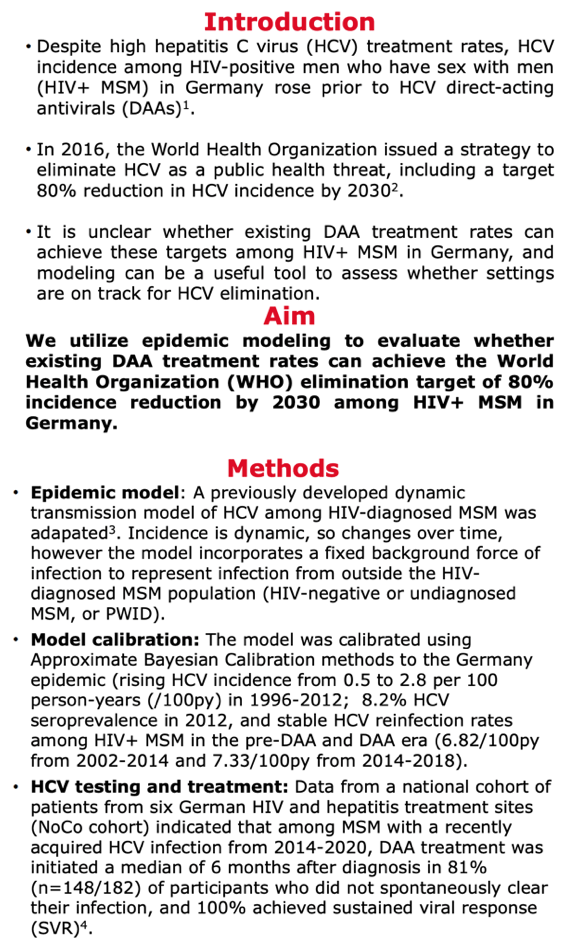
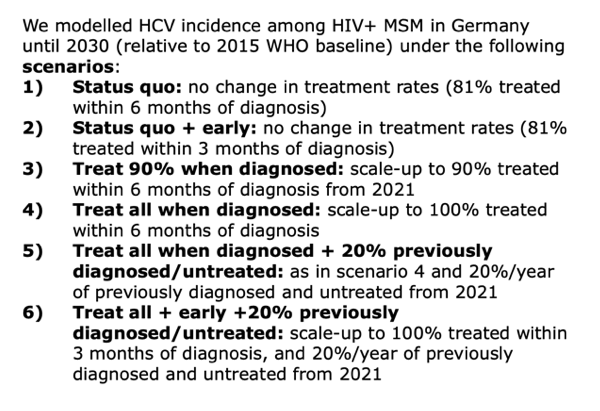
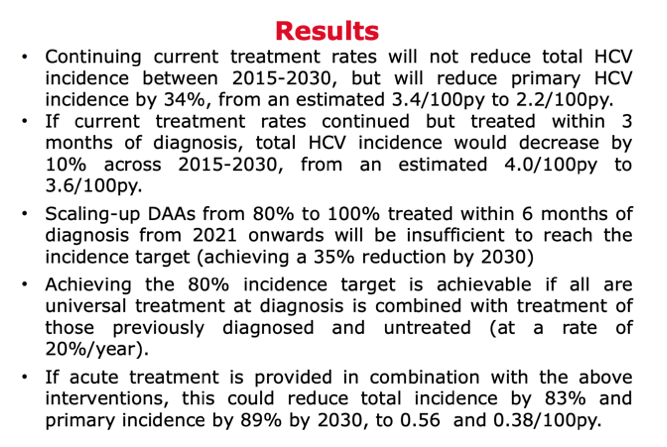
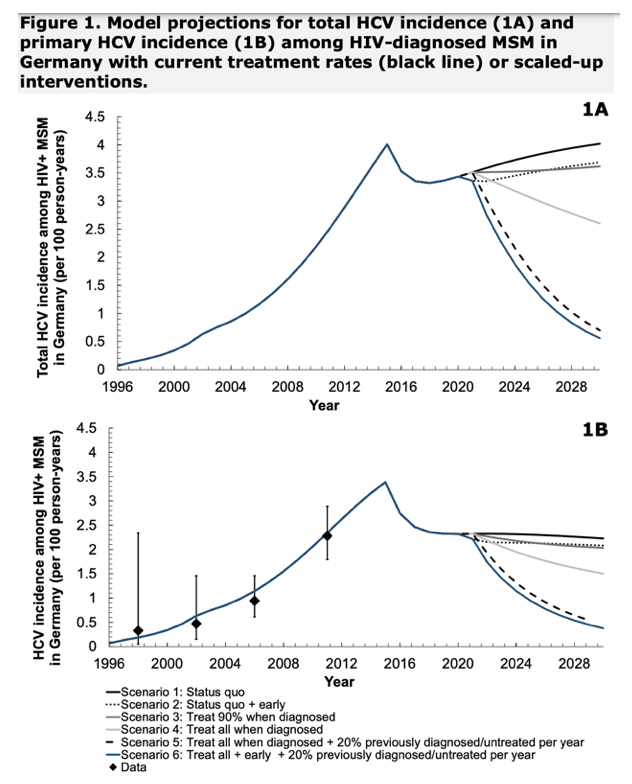
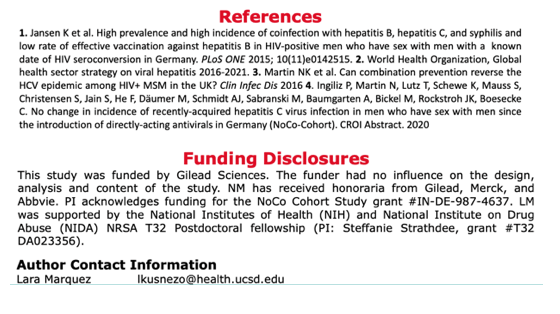
|
| |
|
 |
 |
|
|